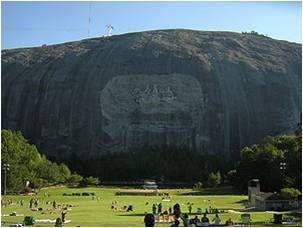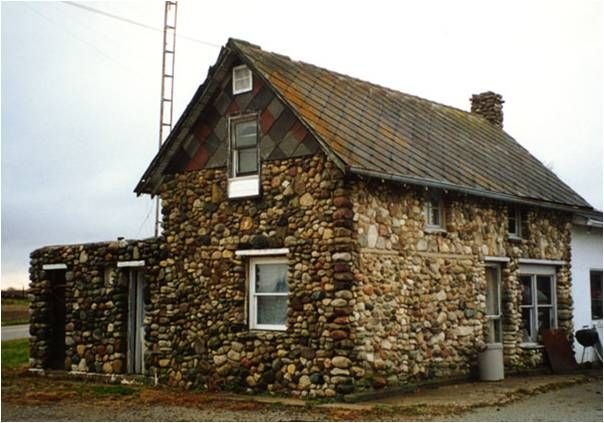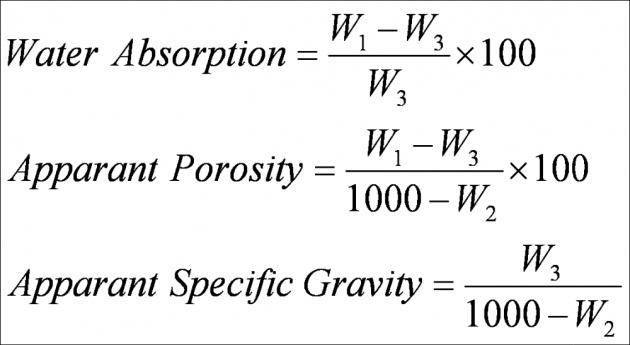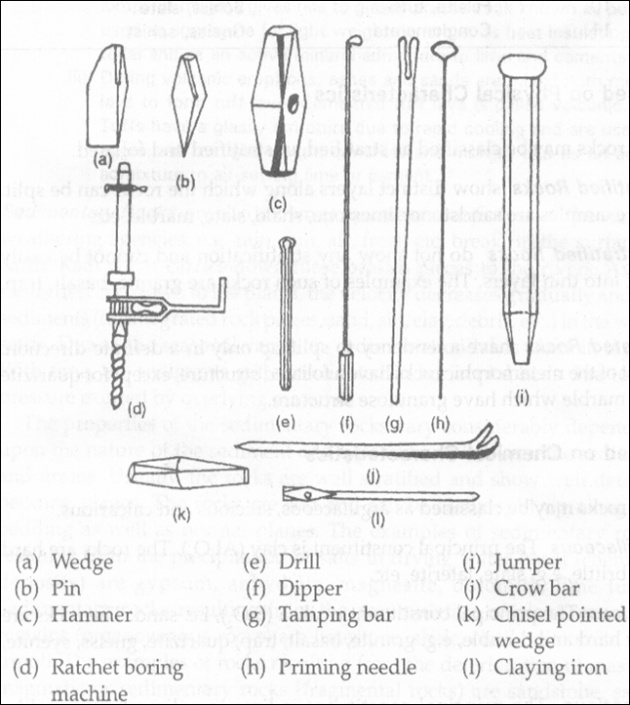Building Stones
Stones used in most historical places
Pyramids of Egypt
Taj Mahal of Agra,India
Great wall of China
Greek and Roman structures
Quaid’s Mausoleum in Karachi
Shahi mosque in Lahore
Forts at Rohtas, LahoreGrand Trunk Road
Lloyd’s Barrage at Sukkur

Stone as building material
lost its importance due to Advent of cement and steel.
Transportation difficulties
Dressing problems
Stone: A construction material derived from rocks in the earth’s crust and mixture of two or more minerals.Mineral is a substance which is formed by the natural inorganic process and possesses a definite chemical composition and molecular structure

.Civil Engineering Uses
Construction of dams, weirs, harbors, bridge abutments, etc Face work of structures for appearance and ornamental value Road metal and railway ballast Aggregate for concrete Stone dust as substitute for sand Thin slabs for roofing, flooring and pavements Limestone for manufacture of lime, cement, etc
Classification of Rocks
Geological classification
Igneous rocks (primary, un-stratified, eruptive) – cooled down molten volcanic lava (magma). Basalts and granites.
Sedimentary rocks (aqueous, stratified) – gradually deposited disintegrated rocks. Sand stones and lime stones\
Metamorphic rocks – transformed due to great heat and pressure. Granite to gneiss, lime stone to marble, shale to slate
Physical classification Stratified rocks – separable distinct layers. Cleavage plane of split visible. Slate, sandstone, lime stone Un-stratified rocks – no sign of strata, cannot be easily split into slabs. Granite, basalt, trap Foliated rocks – having tendency to split up only in a definite direction Chemical
Classification of Siliceous rocks – containing silica SiO2 (sand) and silicates. Granite, basalt, trap, quartzite, gneiss, syenite, etc
Argillaceous rocks – containing clay or alumina Al2O3. Slate, laterite, etcCalcareous rocks – containing calcium carbonate or lime. Limestone, marble, dolomite, etc
Practical Classification
Granites Basalts Marbles Sandstones Slates, etc
Characteristics of Good Building Stones
Appearance & color – uniform color, lighter shades preferred.Structure – Not dull in appearance, crystalline homogenous close Hardness– resistance to abrasion, friction and wear. Hardness scale 1 to 10 Toughness – Withstand impact, vibrations, moving loads Dressing – uniform texture and softness for fine surface finish Porosity and Absorption – exposed surface absorbs rain water forming acids causing crumbling action. Cyclic freezing and thawing of pore water Seasoning – hardening and weathering affect due to evaporation of quarry sap and formation of months for proper seasoning Weathering – resistance to action of weather Resistance to fire – free from calcium carbonate or oxides of iron Durability – compact, homogenous and less absorptive is more durable
Moh’s Hardness Scale
1 Talc, scratched easily by thumb nail
2 Gypsum, scratched by thumb nail
3 Calcite, scratched not by thumb nail but by knife
4 Fluorite, cut by knife with difficulty
5 Apatite, cut by knife with difficulty more than 4
6 Orthoclase, cut by knife with great difficulty
7 Quartz, not scratched by steel, scratches glass
8 Topaz
9 Sapphire
10 Diamond
Tests of Stones
Weathering test of natural building stones
Durability test of natural building stones
Water absorption and porosity test
Compressive strength test
Selection of Sample for Tests A truly representative sample of grade of stone should be selected Sample may be selected from quarried stone or natural rock Separate samples weighing at least 25 kg each shall be collected from differing strata Test pieces for toughness or compressive strength test shall be at least 10.0 x 12.5 x 7.5 cm in size Test pieces shall be free from seams or fractures In case of field stones and boulders separate samples shall be selected of all classes of stones based on visual inspection
Weathering Test
Specimen 5 cm diameter, 5 cm high cylinders 5 cm cubes Smooth finished, edges rounded to 0.3 cm Three test specimens oven dried at 105 ± 5°C for 24 hrs and cooled in desiccators down to room temp 20 to 30°C
W1 weight of cooled and dried test piece, weighed to nearest 0.01 gm Specimens submerged in water for 24 hrs at room temp
W2 immersed and freely suspended sample weight Remove the specimen from water, wipe off surface water
W3 weight after removal from water Place the specimen in a glass dish in solution of 25 ml of water and 2 gm of powdered gypsumSpecimen dish kept in oven at 105 ± 5°C for 5 hrs till gypsum powder becomes dry Specimen cooled down to room temp 25 ± 5°C Heating and cooling cycle is repeated 30 times Specimen removed and cleaned with wire brushSpecimen kept immersed in water for 24 hrs.
W5 weight of sample freely suspended, immersed in water
A1: Original absorption of specimen on 24 hr immersion in water
A2: Final absorption after 30 cycles
V1: Original volume after 24 hrs immersion in water
V2: final volume after 30 cycles. density of water at observation temperature Durability Test Specimen 5 cm diameter, 5 cm high cylinders or 5 cm cubes Smooth finished, edges rounded to 0.3 cm At least three test samples dried for 24 hrs and weighed as W1 Samples suspended in solution of 14% sodium sulphate decahydrate (density 1.055 kg/m3) for 18 hrs at room temperature Samples air dried for 30 minutes Samples now oven dried for 24 hrs at 105 ± 5°C Samples cooled down to room temperature to complete one cycle Weight W2 at the end of every 5th cycle noted and 30 cycles completed
Durability expressed as Water Absorption and Porosity
Change in weight =(W1-W2/W1)x100
Test Sample preparation Sufficient material is crushed Material passing 20 mm sieve is retained Material washed to remove dust About 1 kg material is immersed and soaked in distilled water at room temperature for 24 hrs Entrapped air is removed by vigorous rotational motion Sample taken out of water and spread on cloth exposed to atmosphere in shade for ten minutes
Water Absorbtion and Prosity Test 
Dry the Surface of test pieces dried with cloth On drying of surface, sample weight W1 recorded Distilled water added to sample in a graduated glass cylinder in portions of 100 ml till level of water reaches 1000 ml mark Entrapped air is removed after each addition of water Total quantity of added water is recorded as W2 Sample taken out of cylinder and dried in desiccators at 100°C for 24 hrs W3 recorded when sample is cooled down W1: Initial weight of dried sample W2: Weight of water consumed in saturation W3: Final weight of sample after drying for 24 hrs .
True Specific Gravity Test
 Crush 0.5 kg of thoroughly washed specimen to 3 mm size, mix and make samples of 50 gm each Sample ground in agate mortar to pass 150 microns sieve Sample is dried at 100°C, cooled in desiccators Specific gravity bottle is cleaned, washed, dried, cooled and weighed (W1)About 15 gms sample placed in specific gravity bottle closed with stopper and whole weighed as W2 Three fourths of specific gravity bottle filled with distilled water Bottle boiled for 10 minutes while removing entrapped air Bottle cooled to room temperature, filled with water, stoppered and weighed as W3 Bottle emptied, washed, filled with only as W4
Crush 0.5 kg of thoroughly washed specimen to 3 mm size, mix and make samples of 50 gm each Sample ground in agate mortar to pass 150 microns sieve Sample is dried at 100°C, cooled in desiccators Specific gravity bottle is cleaned, washed, dried, cooled and weighed (W1)About 15 gms sample placed in specific gravity bottle closed with stopper and whole weighed as W2 Three fourths of specific gravity bottle filled with distilled water Bottle boiled for 10 minutes while removing entrapped air Bottle cooled to room temperature, filled with water, stoppered and weighed as W3 Bottle emptied, washed, filled with only as W4
Test for Compressive Strength
Specimen Preparation Load bearing surfaces finished as nearly true, parallel and perpendicular planes as possible Loaded face dimensions measured to nearest 0.2 mm Specimens kept immersed in water at 20 to 30°C for 24 hrs for saturated condition testing Specimens oven dried at 105 ± 5°C for 24 hrs and cooled down to room temp for dry testing .Testing load gradually increased @ 140 kg/cm2 per minute until break down Max load applied divided by area of bearing surface is taken as the compressive strength of specimen Quarrying and Dressing
Quarrying: An art of extracting from the rock beds stones of different varieties used for general building work and broken stones for roads and concrete work, etc Quarry: The place from stone is obtained by digging or blasting etc
Digging or Excavating Method. Stones occurring as detached nodules may be dug using manual methods like crowbars etc
Heating Method. Rock surface is heated for several hours resulting into unequal expansion and crushing of rock into small pieces
Wedging Method. Layered rock is split at cleavage or seam using steel wedges and pins Blasting Method. Hard and compact rock is blasted out using explosives techniques comprising boring, charging, tamping and firing




